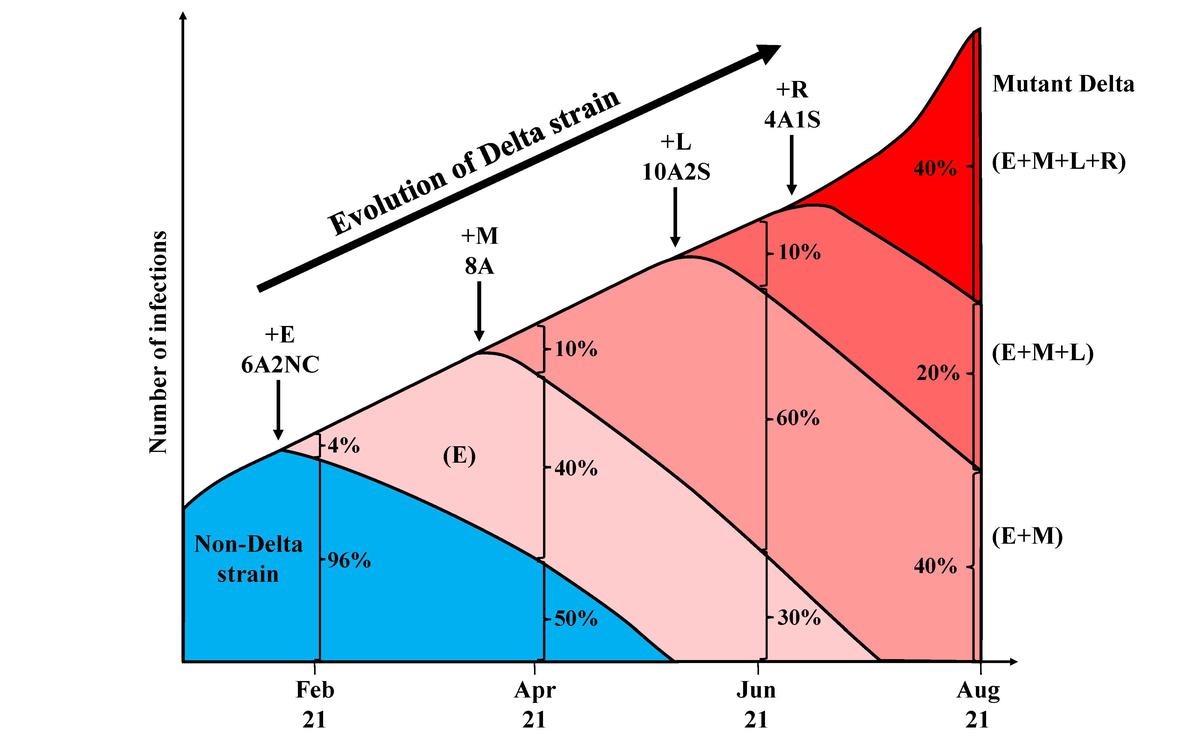The runaway evolution of SARS-CoV-2 leading to the highly evolved Delta strain
In new epidemics after the host shift, the pathogens may experience accelerated evolution driven by novel selective pressures. When the accelerated evolution enters a positive feedback loop with the expanding epidemics, the pathogen’s runaway evolution may be triggered.
 Image credit: Yongsen Ruan
Image credit: Yongsen Ruan
Overview
- In new epidemics after the host shift, the pathogens may experience accelerated evolution driven by novel selective pressures. When the accelerated evolution enters a positive feedback loop with the expanding epidemics, the pathogen’s runaway evolution may be triggered. To test this possibility in COVID-19, we analyze the extensive databases and identify 5 major waves of strains, one replacing the previous one in 2020 – 2021.
- The mutations differ entirely between waves and the number of mutations continues to increase, from 3-4 to 21-31. The latest wave is the Delta strain which accrues 31 new mutations to become highly prevalent. Interestingly, these new mutations in Delta strain emerge in multiple stages with each stage driven by 6 – 12 coding mutations that form a fitness group. In short, the evolution of SARS-CoV-2 from the oldest to the youngest wave, and from the earlier to the later stages of the Delta wave, is a process of acceleration with more and more mutations.
- The global increase in the viral population size (M(t), at time t) and the mutation accumulation (R(t)) may have indeed triggered the runaway evolution in late 2020, leading to the highly evolved Alpha and then Delta strain. To suppress the pandemic, it is crucial to break the positive feedback loop between M(t) and R(t), neither of which has yet to be effectively dampened in late 2021.

Link to this Research
❤️ Related Research ❤️
- 👉 On the origin of SARS-CoV-2—The blind watchmaker argument
- 📚 A theoretical exploration of the origin and early evolution of a pandemic
- 💬 Evidence of SARS-CoV-2 in Italy, November 2019 and September 2019
- 💡 Others to be added
License
Copyright 2020-present Yongsen Ruan.